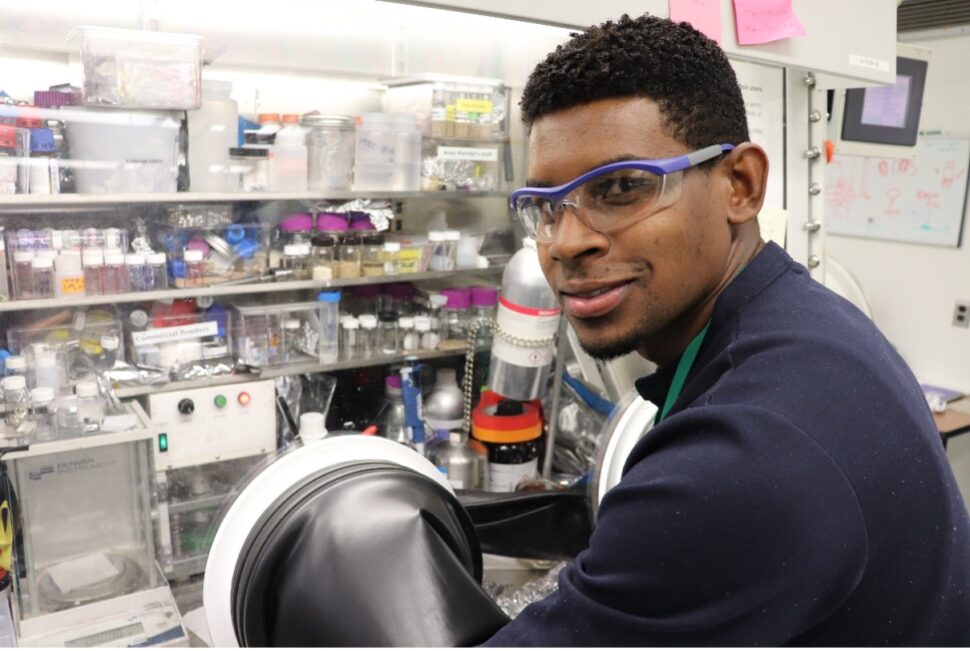Lithium-ion batteries can be found in electric vehicles and a variety of consumer electronics. In recent years, however, the high cost of the elements required for producing these batteries, coupled with safety concerns over the batteries catching fire if stored improperly, has prompted researchers to explore alternative energy-storage solutions.
Sodium-ion batteries are seen as a possible alternative, given that these batteries can be made of earth-abundant materials and thus would be cheaper to produce.
Shantonio Birch, a doctoral student in mechanical engineering at the University of Michigan, spent a recent summer contributing to sodium-ion battery research efforts at Oak Ridge National Laboratory (ORNL) through the GEM Fellow Internship Program.
ORNL partners with the National GEM Consortium to host GEM fellows for summer research experiences. The National GEM Consortium is a network of leading corporations, research institutions and universities that enables qualified students from underrepresented communities to pursue graduate education in science, technology, engineering and mathematics (STEM) fields.
Birch joined a team of researchers in ORNL’s Diffraction Group seeking to develop a next-generation sodium-ion battery. The team’s battery research offers enhanced energy storage capabilities and low cost, thanks to lattice oxygen components, which, Birch explained, were previously believed to play an “inconsequential, spectator-like” role in energy storage. The battery system also features improved fireproofing in its cathode material, thereby reducing the risk of explosions seen in some lithium-ion batteries.
Under the guidance of Instrument Scientist Jue Liu, Ph.D., Birch used X-ray diffraction techniques to conduct measurements of materials used in the battery. He also assisted with battery fabrication and electrochemical testing.
Birch pointed to the hands-on nature of the research as a highlight of the internship.
“At my home institution I am heavily involved in computational research, which can be exciting, but varies in terms of impact, especially when compared to experimental research,” he said. “I came to ORNL with the intention to delve into some hands-on, high-impact experiments.”
Through his 10 weeks at ORNL, Birch learned how to pivot from one research area to another.
“I came in as a senior Ph.D. student with relatively fixed interest in one field,” he said. “Contributing to a completely new project that was outside of my field taught me how to leverage my existing research experience to develop expertise in another area.”
At the University of Michigan, Birch is studying the influence of dynamic disorder and molecular distortions on thermoelectric transport crystalline organic semiconductors. After earning his doctoral degree, Birch hopes to work at a national laboratory or user facility to advance his research. In addition, he wants to spread awareness of opportunities in science and engineering through innovation hubs and incubators.
When he’s not conducting research, Birch loves to travel. “Two years ago, I made a pact with myself that I would travel to a new country every semester,” he said. “And since then, I have managed to pull it off, starting with South Korea in 2017 and leading up to a trip to Tbilisi, Georgia, following my ORNL internship.”
The GEM Fellow Internship Program at ORNL is administered by the Oak Ridge Institute for Science and Education (ORISE) for the U.S. Department of Energy.

